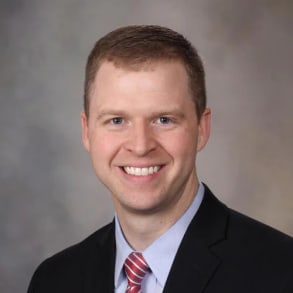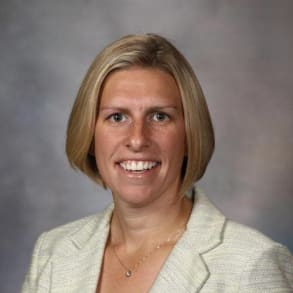This video talks about the wide span of shoulder and upper extremity conditions for which Mayo Clinic Orthopedic Surgery and Sports Medicine experts provide care. The experts discuss their relationship with the Minnesota Twins and how Mayo Clinic is harnessing the same techniques used for elite athletes and applying them to the care of recreational athletes. They also discuss minimally invasive techniques they use and how these benefit patients in recovery time and scarring at the surgical site. They educate patients on how to avoid reinjury as well. Sport Medicine experts featured include Christopher L. Camp, M.D. , Elena (Ellie) J. Jelsing, M.D. , David B. Soma, M.D. , and Kelechi R. Okoroha, M.D.
shoulder and upper extremity care at Mayo Clinic is really sort of a comprehensive package the collaborative nature between all of the physicians here. So whether that's non operative operative, not only for the common problems, but even for the uncommon problems, we have a lot of different world leaders and so we're used to dealing with some of the more complex issues. So for the shoulder there's a lot of new things that are emerging. One of the biggest, the Ortho biologics and regenerative medicine region medicine in general is harvesting the body's potential to heal, is drawing the patient's blood, spinning it down to get the platelets and healing cells and injecting it back into that patient's shoulder to hopefully help stimulate some healing of the labrum, help reduce inflammation and improve healing in patients that have some of those milder disease like rotator cuff tendonitis or tendon, Open these relationship with the twins has been very beneficial. I think it gives us a very unique perspective on how to treat patients. Some of the research we're doing now is finding ways that we can take that same technology that's used for elite athletes and make it more practical for the recreational athlete. In addition to that, on the surgical side, we can now do in minimally invasive techniques moved into the realm of ultrasound guided surgical procedures. One of the great things about that is because you can see right through the skin and the patients are left with a smaller scar and a much faster recovery. Some of the big focus areas for the shoulder include rotator cuff injuries. Normally, we try to treat this conservatively with physical therapy to strengthen the other muscles of the shoulder. But sometimes patients have residual pain and weakness and those patients, we can perform a minimally invasive surgery to reattach that tendon to the bone and return that range of motion and strength. Common things we see in the elbow, our medial or lateral epic candle itis, which is also called golfer's elbow or tennis elbow. And with some focused and specific physical therapy, we can generally get folks back to doing all the things that they want to do. If you're a baseball player, we see more common over you injuries with the shoulder or the elbow. So understanding what things are okay to do and what are not okay to do is a big part of our treatment plan. If you do start to have a problem or an injury you want to catch it soon for patients to not wait until they're in a 10 out of 10 pain and can't do the things that make them happy. Have patients as young as six and I have patients that are over 100 but they all have some type of recreational activity that they enjoy. And our goal is to keep them doing that for as long as possible
Related Presenters



